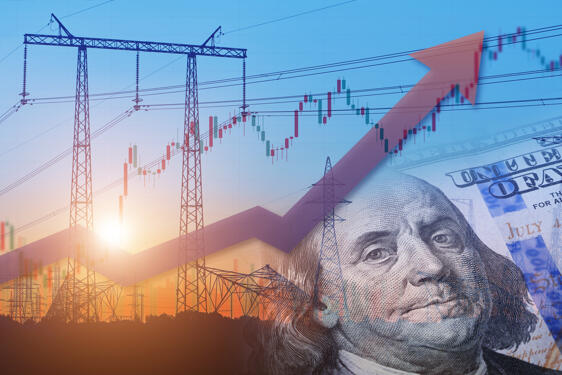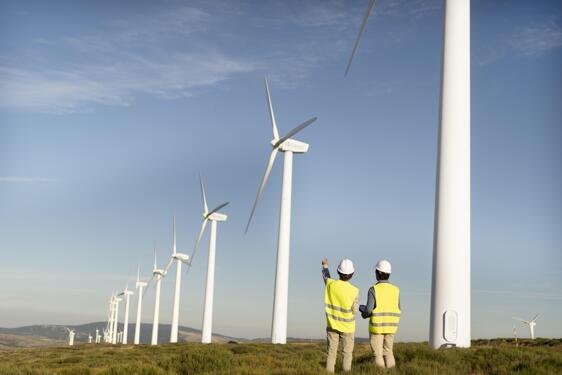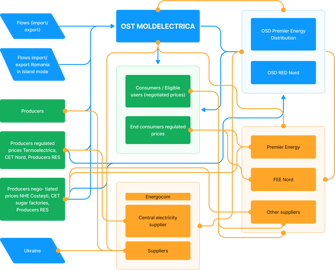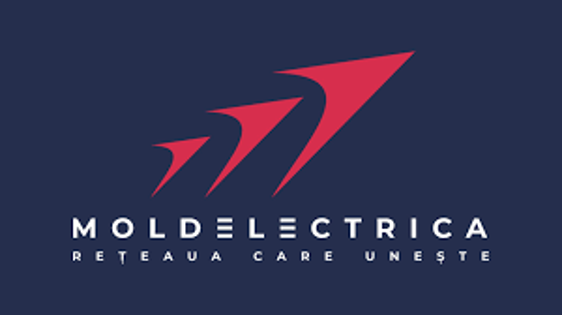Moldova`s Energy Market
The energy policy agenda of the Republic of Moldova (Moldova) is determined by several interrelated factors. The key driver is high dependence on imports from limited sources and subsequent energy security considerations. Moldova’s energy policy aims on improving integration in regional markets, strengthening energy security, improving compliance with EU directives, increasing electricity generation capacity and promoting energy efficiency and renewable energy.

Dependence on Imports
Moldova is dependent on imports of fossil fuels and electricity, with only about 20% of energy produced domestically. However, with the full integration of Moldova's electricity system and infrastructure into ENTSO-E from March 2022, the country is able to import and export electricity to the EU market, contributing to the diversification of energy sources.
Share of Renewable Sources
As of 2025, the share of renewable energy sources in Moldova's gross final energy consumption is approximately 25%. Biomass is the dominant renewable energy resource, followed by wind, solar, and hydropower. The government aims to increase this share to at least 30% by 2030.
Energy Development Plans
In its energy development strategy for 2030, the country has set targets to increase the share of renewable energy to 30% of total consumption, increase energy efficiency by 30% and reduce CO2 emissions by 35%. By integrating into ENTSO-E and supporting renewable-oriented legislation, the country is heading towards reducing its energy dependence and improving energy security.
Energy market model


Model / PDF
Energy market model
Local energy operators
“Moldelectrica” SE
The Electricity transmission system operator (TSO) is the State Enterprise “Moldelectrica”, founded in 2000. The main responsibilities of “Moldelectrica” are the electric power transmission into transmission network, the centralized management of the electric power system, the operation of electric power transmission networks and interconnections with electric power systems of other countries, providing electricity transmission services for system users, including electricity transit.“Energocom” SE
“Energocom” SE was appointed by the Government of the Republic of Moldova as the central electricity supplier, starting with April 2018. In accordance with the Law, the central electricity supplier purchases all electricity from eligible producers, from renewable energy sources and from cogeneration plants and resells the respective electricity to suppliers at regulated prices, approved by the National Agency for Energy Regulation.The electric power system of the Republic of Moldova is interconnected and operates in synchronous mode with the electric power system of Ukraine through 7 interconnections of 330 kV and 11 interconnections of 110 kV. The lowest electricity transmission capacity of these interconnections is 600 MVA. Also, the electric power system of the Republic of Moldova has 5 interconnections with the electric power system of Romania, which can be operated in “island mode” through 4 interconnections of 110 kV and an interconnection of 400 kV. The electricity transmission capacity of these interconnections is 310 MVA.
Key energy figures




Model / PDF
Key energy figures
Based on the "National Energy and Climate Plan (NECP) of the Republic of Moldova for 2025-2030," developed under the guidance of the Energy Community Secretariat and in compliance with EU regulations, Moldova presents two strategic energy scenarios. The "With Existing Measures" (WEM) scenario adheres strictly to current policies, aiming for conservative advancements in renewable energy without assuming future policy enhancements. Conversely, the "With Planned Measures" (WPM) scenario is more ambitious, incorporating both existing policies and additional planned initiatives, aiming for significant advancements in renewable energy infrastructure, including the development of 561 megawatts of solar parks by 2050. This section precedes a comparative table that illustrates these scenarios, providing a foundation for strategic planning and investment decisions in Moldova's renewable energy sector.

Legal Framework
No.10 of 26.02.2016
Law on the promotion of the use of energy from renewable sources, No.10 of 26.02.2016
No. 44 of 27.03.2014
Law on the Labelling of Energy-Related Products, No. 44 of 27.03.2014
LEDS-2030
Low-Emission Development Strategy (LEDS-2030)
No. 151 of 17.07.2014
Law on Approving Eco-Design Requirements for Energy-Related Products, No. 151 of 17.07.2014
LEDS-2030
Low-Emission Development Strategy (LEDS-2030)
No. 92 of 29.05.2014
Law on thermal energy and promotion of cogeneration, No. 92 of 29.05.2014
No.117 of 23.12.2009
Law on the Accession of the Republic of Moldova to the Treaty establishing the Energy Community, No.117 of 23.12.2009
No. 102 of 05.02.2013
Energy Strategy by 2030, Government Decision, No. 102 of 05.02.2013
No.139 of 19.07.2018
Law on Energy Efficiency, No.139 of 19.07.2018
No. 174 21.09.2017
Law on Energy No. 174 of 21.09.2017
No. 283 of 07.08.2020
Decision No. 283 of 07.08.2020 on the approval of electricity market Rules
No. 107 of 27.05.2016
Law no. 107 dated 27.05.2016 on Electricity
Nr. 321 din 28-05-2024
HOTĂRÂRE ANRE Nr. 321 din 28-05-2024
Nr. 44 din 06-03-2025
LEGE Nr. 44 din 06-03-2025
Nr. 306 din 26-10-2023
LEGE Nr. 306 din 26-10-2023
Nr. 296 din 07-05-2024
HOTĂRÂRE Nr. 296 din 07-05-2024
Nr. 376/2017 din 28-09-2017
Hotărârea ANRE nr. 376/2017 din 28-09-2017
Nr. 375 din 28-09-2017
Hotărârea Nr. 375 din 28-09-2017
Nr. 201 din 19-05-2017
Hotărârea Nr. 201 din 19-05-2017

